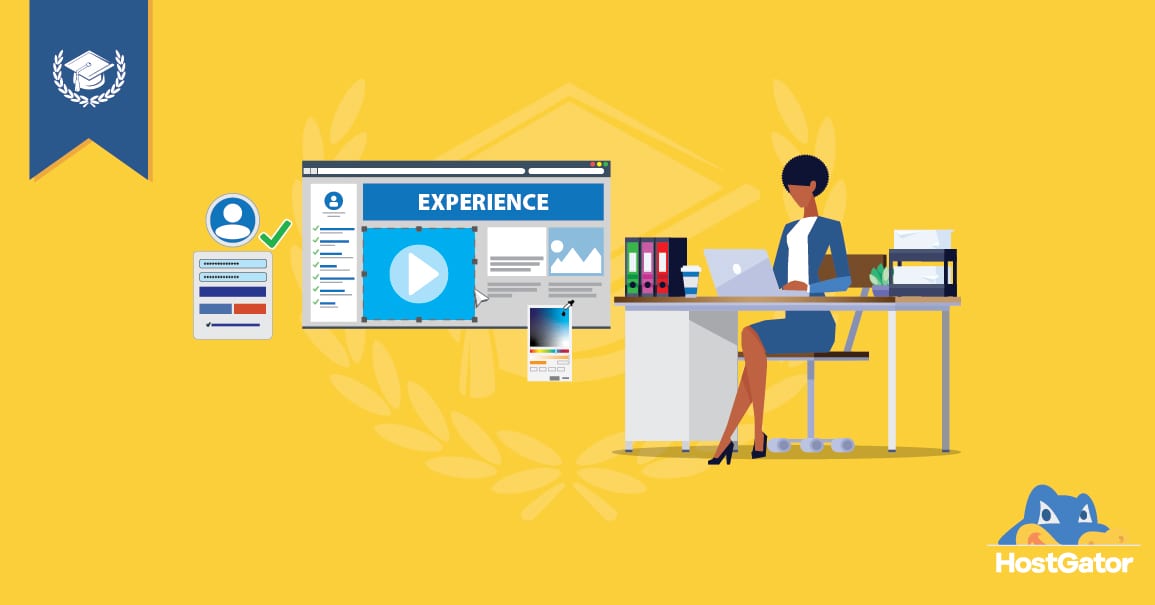Ready to start a new phase in your working life? You need to let potential employers or clients know what you’re doing now.
That means it’s time to update (or create) your personal brand. Let’s walk through that process now.
This post is part of our blog series, Reinventing Your Career During COVID, where we cover the basics of changing careers during a challenging time, including:
What even is a personal brand?
Your personal brand is simply your story, told in a way that shows the unique value you offer to employers, customers or clients.
Maybe you have hard-to-learn technical skills that are in short supply, life experience that can help companies connect with new customers, or a can-do attitude and ability to solve problems under pressure. Whatever your unique value is, highlight it, explain how you got it, and how you want to use it.
Simple right? But like any project, things can quickly get disorganized without a plan. With a plan, you can present yourself in a way that’s consistent—and consistency is how the best brands earn and keep others’ trust.
So, let’s plan. You need to focus on two main areas to build your brand: your story and your branding materials.
Your personal brand starts with your story
The best brands tell stories. Why? Humans are wired to remember, think about and share stories. Some researchers have found that people are 20 times more likely to remember information if it’s shared in story form. And you want people in your network and your audience to remember you!
What kind of story should your personal brand tell? The story of your career evolution, goals and skills — and how they can help employers, customers or clients achieve something.
Start with the ingredients of your story:
- The kind of job, customers or clients you want
- Your training and education, including classes, apprenticeships, mentorships, online training courses, certifications, licenses and life experience
- Testimonials or recommendations from employers, customers, teachers and mentors
With all of that in mind, think about what makes you special and how your uniqueness makes you an asset.
For example, maybe you’re looking for an IT job with a big company. You’ve completed your foundation-level certification. You also have a glowing recommendation from a boss at your old job in customer service, who says that you were effective at helping customers solve their problems–and at helping your co-workers figure out technical problems, even though that wasn’t part of your job description.
The story here might be that you’ve always been drawn to help people solve problems, you’re always looking for new problems to learn about and solve, you’re good at it, and you go above and beyond—and you can solve problems under pressure from upset customers, too.
You can use this information to create a simple personal brand statement that sums up your unique value at a glance: “I love to help stressed-out people solve their technical problems so they can focus on what’s important to them and stress less. My IT training and past customer service experience help me blend technical know-how with excellent interpersonal skills.”
Use your brand story to create your branding materials
Yay! Your brand statement is ready to go—but it’s not quite time to put it out into the world yet. Consistency in the way you share your story is important. One study found that companies say they’d earn 33% more revenue if their brand was “always presented consistently,” because people trust consistency.
So, let’s use your brand story to create branding materials you can use consistently, wherever you show up. You’ll need:
Your brand statement. Read it again, check it for typos, read it out loud and have people you trust read it. You’ll use the final version pretty much everywhere.
Your long bio. You can expand on your mission statement here to tell more of your brand story where you have room, like on your website and LinkedIn. The maximum length you should aim for is 2,000 characters, so your long bio will fit the About section of your LinkedIn profile.
For example, if your mission statement is: “I help brands create authentic social media campaigns that connect with Gen Z consumers, so they can avoid missteps and grow their audience in this rising demographic,” then your long bio should include your qualifications, experience and proof, like “I have 600,000 TikTok followers who check in every day for my tips on building a personal brand that works” and “As a member of Gen Z, I feel the pain of marketing messages that make me cringe, and I want to help my clients connect authentically with the next generation of young consumers.”
Your headshot. Yep, you need a professional headshot, or as close to one as you can get with the help of a friend and a good phone camera. Smile, look at the camera, and wear something that coordinates with your brand colors (see below). Save it as a PNG file in high-res and low-res versions and you’re good to go.
Your logo. A logo is helpful if you’re pivoting to freelancing or starting a business, and it doesn’t have to be expensive or time-consuming. You can use our tips to design your own logo.
Your colors and fonts. Make sure they’re consistent with your logo and your brand story. For example, a cupcake delivery business can use bright colors and less traditional fonts to represent creativity and fun, while a mobile auto mechanic can use “industrial” colors and san serif fonts to represent reliability.
Your personal branding email address. Set up an email address through your portfolio or business website to strengthen your credibility and keep your professional and personal email separate.
Your testimonials. Remember the recommendations you collected while you were writing your brand story? You can use them, with permission, as part of your brand materials.
Use your personal brand materials to tell your brand story
Now it’s time to launch! You can use your personal brand materials to update your
- Portfolio or business website
- LinkedIn profile
- Other social profiles
- Videoconferencing profiles
- Resume
- Email signature for your personal-brand email account
- Business cards, if you plan to network in person
Focus on your brand story when you talk to people about your goals, and you’re on the road to building a personal brand that will help you launch your new career!
In our next post in this series, we’ll show you how to use your personal brand find the job you want or to land customers and clients. In the meantime, you can work on your portfolio website so it will be ready when you start networking.



![How to Create Your Freelance Brand [5-Step Guide]](https://mdvirtue.com/wp-content/uploads/2022/02/How-to-Create-Your-Freelance-Brand-5-Step-Guide-400x250.jpeg)
![How to Build a Coaching Website on WordPress [Expert Guide]](https://mdvirtue.com/wp-content/uploads/2022/02/How-to-Build-a-Coaching-Website-on-WordPress-Expert-Guide-400x250.jpeg)

0 Comments